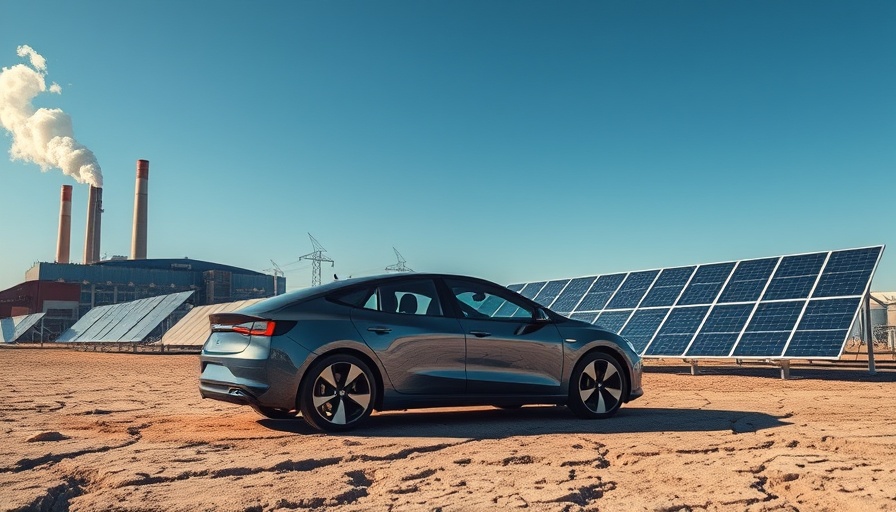
Unveiling the Hidden Costs of Electric Vehicle Batteries
Electric vehicles (EVs) have emerged as the champions of the automotive revolution, draped in promises of sustainability and zero-emission driving. They stand as a beacon of hope against climate change, but a deep dive into the EV world unveils unsettling realities that linger beneath the surface. The production and eventual disposal of EV batteries harbor ethical and environmental dilemmas that are rarely acknowledged in the mainstream conversation about green transport.
In 'The Dirty Secret of Clean Cars: The Real Cost of EV Batteries,' the discussion dives into the unseen issues surrounding electric vehicles, prompting us to explore the broader implications of battery production and waste management.
The Mining Conundrum: Ethical and Environmental Concerns
The journey of an EV battery begins far from the sleek showrooms where these vehicles are sold. It starts in the mining industry — often in remote regions face daunting ecological consequences. Critical materials such as lithium, cobalt, and nickel are essential for battery production but have troubling supply chains. For instance, cobalt mining in the Democratic Republic of Congo has been spotlighted for its prevalence of child labor and unsafe working conditions. These ethical issues raise critical questions about the true cost of our transition to electric mobility.
The Carbon Footprint: More Than Meets the Eye
Battery production is also a significant culprit in carbon emissions, with estimates indicating that manufacturing a single EV battery emits around 15 tons of CO2. To put this into perspective, this figure overshadows the emissions from a traditional gasoline car during its first 50,000 kilometers. As we champion an eco-friendly future, we must acknowledge the hidden carbon debts tied to the extraction and processing of battery materials — costs that belied the "clean" image of electric vehicles.
The Ticking Time Bomb: E-Waste Challenges on the Horizon
Another looming concern lies in the lifespan of EV batteries. As their first generation begins to age, a potential avalanche of waste is anticipated by 2030. Millions of these batteries will reach the end of their life cycle, creating an escalating e-waste crisis. With our current recycling technologies, the task of recovering valuable materials is complex and costly, often defying economic viability. It’s a challenge that demands urgent innovation and infrastructure expansion.
Pioneering Solutions: Innovations in Recycling
Amid these challenges, there is a silver lining. Companies like Redwood Materials are leading the charge toward effective battery recycling. They are developing processes that can recover up to 95% of materials from end-of-life batteries, demonstrating that recycling at scale is possible. However, the key question remains: Can we ramp up these solutions quickly enough to tackle the impending wave of waste? It’s a race against time that requires public and private collaboration, significant investment, and regulatory support.
A Balanced Perspective: The Future of Sustainable Transport
So, does the complex landscape of EV batteries mean we should abandon electric vehicles altogether? Far from it. The shift to electric transportation is essential for our urban environments, drastically reducing air pollution and improving public health. Nevertheless, a nuanced understanding of the entire battery lifecycle — from mining through to recycling — is essential for informed decision-making as consumers and policymakers.
Embracing the Future: Innovations Beyond Lithium
Looking ahead, newer technologies like sodium-ion batteries promise less environmentally damaging alternatives. These innovations could help mitigate the challenges associated with lithium and cobalt, paving the way for a sustainable battery landscape. Furthermore, consumers and producers alike need to advocate for ethically sourced materials and the establishment of a robust global recycling system.
Conclusion: Take Action for a Healthier Planet
We may face a substantial challenge in transitioning to a sustainable transportation system, but it is imperative to push for continuous improvements in the EV industry. A cleaner future relies not just on the adoption of electric cars but on broader systemic changes, including better educational initiatives surrounding ethical sourcing, environmental impact assessments, and technology-driven solutions. Together, as eco-innovators, we can influence the discourse around electric vehicles and challenge the status quo to create not only cleaner alternatives but a genuinely sustainable future.
 Add Row
Add Row  Add
Add 






Write A Comment